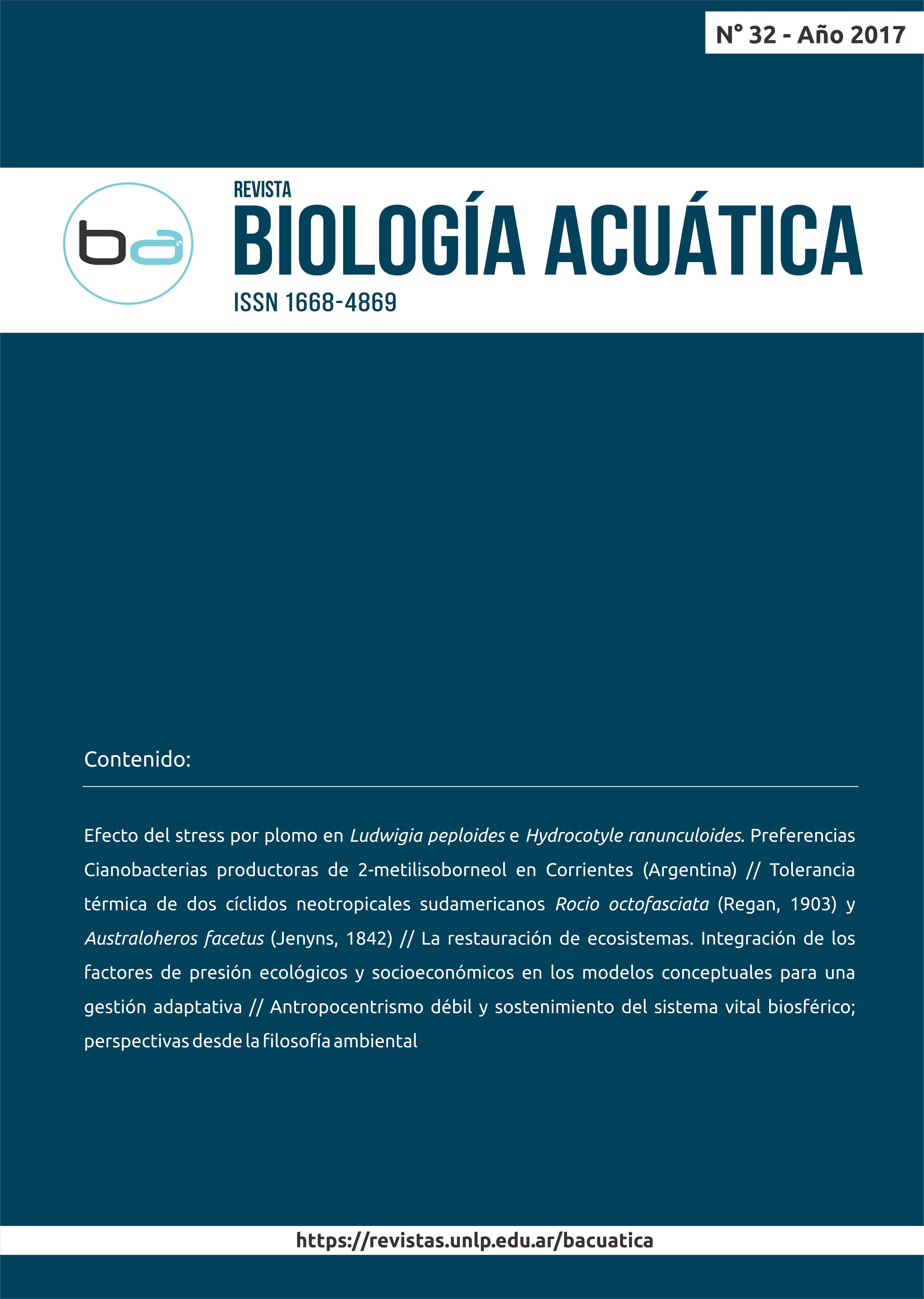Tolerancia térmica de dos cíclidos neotropicales sudamericanos Rocio octofasciata (Regan, 1903) y Australoheros facetus (Jenyns, 1842)
Keywords:
Acclimatization, cichlids, critical thermal maximum, South AmericaAbstract
Temperature is one of the key environmental conditions for fish distributional range, since it can restricts or expand fish habitat. Sudden environmental temperature change could be the cause of important fish mortalities and could modify aquatic community’s structure. This work studied ability for temperature acclimation and the critical thermal maximum of a tropical fish species Rocio octofasciata and the subtropical fish species Australoheros facetus. A total of eighteen experiments with 87 specimens (n: 54 for R. octofasciata and n:33 for A. facetus ) has been performed using critical thermal maximum technique. The lethal temperature values and loss of equilibrium temperatures were identified for both species. Results suggested that R. octofasciata could acclimated at temperature between 10 and 35°C, while A. facetus at temperatures between 9,5 and 35°C. Loss of equilibrium temperature was established for R. octofasciata between 33,80 and 43,03°C and for A. facetus between 35,55 and 38,06°C, while lethal temperature was determined between 36,62 and 43,80°C for R. octofasciata and between 37,70 and 39.98°C for A. facetus.





















